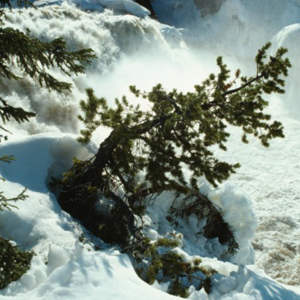 Imagine 45 days of rain brought by a series of winter storms so strong and wet that they turned the Sacramento Valley into an inland sea, making the state capital virtually inaccessible.
Imagine 45 days of rain brought by a series of winter storms so strong and wet that they turned the Sacramento Valley into an inland sea, making the state capital virtually inaccessible.
Well, that happened in California in the winter of 1861-1862, and scientists say it will happen again, bringing massive flooding, landslides and property damage across the state.
To help emergency agencies plan for such an event, the US Geological Survey released the “ARkStorm Scenario” in Sacramento this week, detailing the repercussions of a storm that produces up to ten feet of rain and forces the evacuations of more than a million people.
“Vast floods would basically take out all the farm land,” said Marcia McNutt, director of the USGS. “They would destroy homes, animals would die, roads would be impassable, infrastructure would be rendered unusable, dikes would fail, levees, would fail.”
Scientists created this hypothetical storm by combining two actual storms, one from 1969 and one from 1986, and putting them back to back. Together, they rival the 1860’s storm in magnitude, which was the last time California saw a storm this size.
Lucy Jones, the chief scientist of the USGS Multi-Hazards Demonstration Project and the architect of ARkStorm, said that storms of this size happen roughly every 100-200 years, or with about the same frequency as a major earthquake on the San Andreas Fault. Jones said the geological record shows that six storms larger than the ARkStorm have occurred in the last 1800 years. (McNutt noted that climate change could cause this frequency to change.)
The name ARkStorm comes from the term “atmospheric rivers,” which are a meteorological phenomenon that draw moisture from the tropics and funnel it into temperate regions.
“In essence, they act like a fire hose, pointing tropical moisture in at California,” said Jones. “They’ve been the source of some very devastating storms in the past, and when we look across the country, we can recognize that the most severe storms in the country are in the hurricane states and in California.”
McNutt said that an ARkStorm could cause close to $1 trillion in damages. The USGS report estimates $400 billion in property damage and $325 billion in business-interruption losses, and it predicts that one-quarter of California’s buildings could be flooded as a result of a storm like this. Additional costs would include loss of life, public health, loss of tourism and recreation dollars, and damage to historical and cultural artifacts and buildings.
Below is a video released by USGS explaining the project.
Mike Dayton, acting chief of the California Emergency Management Agency, said that science-based scenarios like ARkStorm are a key tool in disaster planning.
“The scenario is going to help us refine existing plans, and it’s going to point out some weaknesses, and we’re going to incorporate that into revised plans,” he said.
Cal-EMA plans to base its annual major planning exercise on the ARkStorm Scenario.
